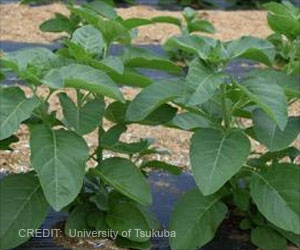Highlights:
- U.S. Food and Drug Administration (USFDA) approves Giapreza (Angiotensin II) injection to treat dangerously low blood pressure in adults with septic or other forms of distributive shock.
- Approval of Giapreza has been given to La Jolla Pharmaceutical Company, a biopharmaceutical company based in California.
- Patients who were treated with Giapreza had three times the likelihood of achieving an acceptable blood pressure after three hours, compared to patients receiving placebo.
Giapreza is a synthetic formulation of the naturally occurring human peptide hormone angiotensin II which is a part of the renin-angiotensin-aldosterone system (RAAS) that causes vasoconstriction and an increase in blood pressure.
Angiotensin II plays a variety of roles. It causes an increase in blood pressure and an increase in effective circulating volume by
- Increasing sympathetic activity
- Increasing tubular reabsorption of Na+ and Cl- in the kidneys and water retention, both on its own and through the release of aldosterone by the adrenal cortex
- Binding to receptors that cause vasoconstriction (constriction of blood vessels)
- Stimulating antidiuretic hormone or ADH secretion that leads to increased water absorption in the renal collecting ducts
Study - ATHOS-3 Trial
The clinical trial involved 321 patients with vasodilatory shock and a critically low blood pressure. Giapreza effectively and significantly raised the blood pressure in these patients who did not respond to high doses of a conventional vasopressor (more than 0.2g/kg per minute of a catecholamine like norepinephrine or a comparable dose of another vasopressor).During the first 3 hours of treatment, either dose of Giapreza or placebo were titrated to achieve a mean arterial pressure (MAP) of ≥75 mm Hg while maintaining the doses of other vasopressors. In the following 3 to 48 hours, Giapreza or placebo was titrated to maintain a MAP between 65 and 70 mm Hg while reducing doses of other vasopressors.
The number of patients who achieved the acceptable blood pressure (measured as MAP) after 3 hours was more among those treated with angiotensin II (70%) when compared to those treated with placebo (23%). A MAP of 75 mm Hg or higher or an increase in MAP of at least 10 mm Hg from baseline without an increase in background vasopressor dose indicated an acceptable blood pressure.
However, since Giapreza can cause dangerous blood clots with serious consequences (clots in arteries and veins, including deep venous thrombosis), it has been recommended that medications that can treat blood clots be taken along with it.
Distributive shock
Distributive shock occurs when there is an impaired distribution of blood flow to the smallest blood vessels of the body; this causes a reduced supply of oxygen levels in the blood that flows to the body’s tissues and organs. Septic shock the most common form of distributive shock, is caused by an infection, most frequently by bacteria, but viruses, fungi, and parasites. Shock results in fatally low blood pressures and is a life-threatening condition.- FDA approves drug to treat dangerously low blood pressure - (https://www.fda.gov/NewsEvents/Newsroom/PressAnnouncements/ucm590249.htm)
- FDA Approves Angiotensin-II for Septic Shock - (https://pulmccm.org/policy-ethics-education-review/fda-approves-angiotensin-ii-septic-shock/)
- Angiotensin II for the Treatment of Vasodilatory Shock. N Engl J Med 2017; 377:419-430.
- La Jolla Pharmaceutical Company - GIAPREZA Update - (http://lajollapharmaceutical.com/wp-content/uploads/2017/12/La-Jolla-Pharmaceutical-Company-GIAPREZA-Update-December-2017.pdf)
Source-Medindia










